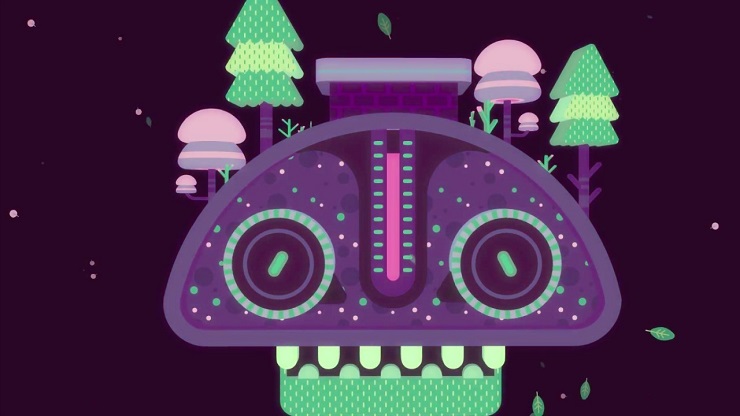GNOG Review
Every now and again a game comes along that leaves you a little lost for words in how to describe it, GNOG is one such game. Essentially it is a puzzle game, but there is more to it than just a sequence of different situations you need to find a solution to. With a strong focus on the simplicity of just fiddling about clicking things on the screen, the way you solve the puzzles is more tactile and experimental than most puzzles games. It’s an interesting title, but one that I don’t feel is entirely successful if you do not have access to a virtual reality unit.
There was lots to like about GNOG, the visuals are a gorgeous pastel palette of avant-garde monster heads that take vague forms such as a log from a felled tree, a house, a spaceship, and even a submarine. Each puzzle is a different monster head and each one has it’s own visual style, including different backgrounds that pulse and shimmer, and unique soundtracks that sometimes play a part in the solution.
Each puzzle follows the same format: you are presented with a monster head and, very much like those toys you give to babies, you must twist and turn dials and push and pull levers and buttons to find the solution. Each monster is essentially a toy box where you first must find a way into the box, and upon doing so you are presented with a diorama and the puzzle proper. Solutions are contained within the environment, perhaps a picture on the wall contains part of the solution or a character or creature is holding a part you are missing. Most solutions are straightforward and are solved very quickly, others take a little more puzzling to solve, but none of them are particularly difficult. Having said that I did find myself brute forcing the solution rather than having an “ah ha” moment for some of them which was a little disappointing.
What I found most interesting with GNOG is there is absolutely no explanation about how to play. There is no story at all, just an expectation that by clicking around the screen you will work it out. There is a quiet confidence in the presentation of GNOG that by clicking about you will find fun. There is some fun there, but in my experience that fun is very limited, and was often replaced with confusion as to what I was actually doing. More positively, there is a real sense of play in each puzzle that I really liked, but there isn’t enough in GNOG to engage the player overly. There are additional parts to the puzzle that are not required for the solution that do have trophies to them for a small incentive to fiddle about, but once each monster head is solved there is very little reason to replay it.
GNOG is a virtual reality compatible title, and perhaps the fact that I was not playing in VR dampened my experience with it. I suspect that much of the surreal elements of the visuals and the twisting and pulling of items is enhanced in VR, but as a sit down experience without the virtual reality effect I was left feeling a little confused and empty.
GNOG is a curious game, at it’s heart it is a puzzle game, but it is also a surreal experience focused heavily on the concept of play. It defies an adequate explanation, and to do so it wouldn’t make much sense on the face of it anyway. In fact, even playing GNOG it doesn’t make much sense. There are strong elements to it, in particular the quirky visual style, but something is lost in translation and even more so I suspect when not playing in virtual reality.






